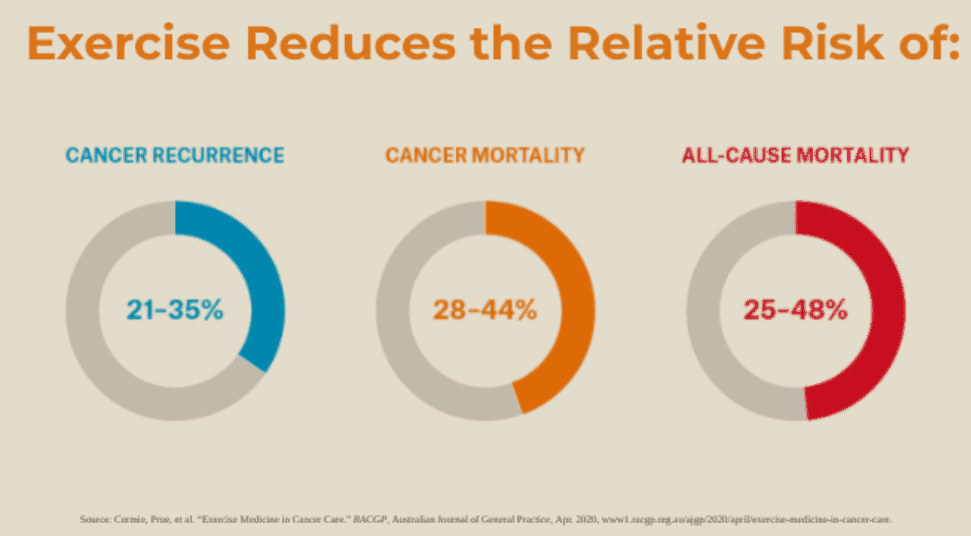Lack of physical activity is a leading cause of chronic illness. In the US, 6 out of every 10 adults have a chronic disease, and 4 out of every 10 have two or more chronic illnesses. Chronic illness is the leading cause of death and disability and the leading driver of the 3.5 trillion dollars in annual healthcare costs in the US.
The research is compelling—exercise can reduce the risk of cancer and of cancer recurrence, as well as cancer mortality and all-cause mortality.
In addition, a large body of evidence shows that exercise can help counteract the negative effects of cancer and cancer treatment.
Exercise can:
- Help maintain a healthy balance of muscle and fat
- Preserve bone mass
- Enhance sleep quality
- Decrease pain
- Improve cognitive function
- Alleviate symptoms of anxiety and depression
- Strengthen immune function
- Improve overall quality of life.
For cancer patients, exercise also appears to reduce the risk of developing other chronic diseases, such as cardiovascular disease and diabetes.
“If exercise could be packed in a pill, it would be the single most widely prescribed and beneficial medicine in the nation.” – Robert Butler, National Institute on Aging
How much and what kind of exercise should you get?
Guidelines suggest that capable individuals need at least 150 minutes of moderate-intensity aerobic activity per week, and some muscle-strengthening activity each week to stay healthy. Amounts and intensity will vary with the physical capabilities of each individual. Ask yourself: What am I physically capable of? Why am I motivated to exercise—what do I want to achieve?
All sorts of activities count when meeting activity guidelines. Going for a walk, yard work, gardening, household chores—all these daily activities are important ways of keeping your body moving. Even activities that might not feel like exercise, like playing with your kids or doing yoga or tai chi, all count as part of meeting these physical activity guidelines. If you think flexibly about what it means to get exercise, you’ll see that it’s not as difficult as it may seem.
What’s important is to find forms of movement that you enjoy doing, so that your chosen activities don’t feel like a chore. Even when you are engaging in sedentary behavior, like working on your computer or watching TV, try to maintain good posture and deep slow breathing as these small things will also help with long-term well-being.
Your body was designed to move, so take the first step and move “your” way!



 Peter Pace
Peter Pace 




